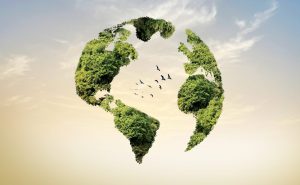Home
At Axcentive, we are committed to driving responsible practices throughout our supply chain. As part of our Corporate Social Responsibility (CSR) engagement, we have focused on sustainable packaging solutions to reduce our environmental impact — particularly carbon emissions. We believe that even the smallest adjustments can have a profound impact on the environment. Small steps can indeed lead to significant positive changes, especially when it comes to packaging and sustainability. Each seemingly minor adjustment — when scaled across a product line or in a supply chain — can have a ripple effect that adds up to a major impact over time.
Reviewing and optimizing packaging has been an area we have been working on in order to contribute to lowering emissions across the supply chain. Here are examples of two actions implemented over the past months.
Eliminating Single-Use Components. In agreement with our distribution network, we have decided to remove dosing spoons and pitchers made of plastic from our packaging. These items were often single-used and rarely reused, making their environmental cost high relative to their utility. By removing dosing items, less plastic is used which means fewer emissions from manufacturing, molding, and transporting those components.
Our packs are nowadays lighter. Removing these items reduces the overall weight of each unit. By removing pitchers from our drums, we are cutting 2.23mty of plastic waste over the next 10 years .
Finally eliminating these parts contribute nowadays to a faster, more efficient process with less operation at the workshop.

Optimizing the dimensions of carton boxes based on the size of the sample has been another step. Benefits are numerous. By ensuring that the carton box is perfectly sized for the product, less cardboard is used per unit. Smaller packaging means as well that fewer resources are used in production (less wood, paper, and chemicals), which lowers the emissions tied to material manufacturing.
Less empty space inside each box means that less bubble wrap, foam, or other padding might be needed to secure the product. This results in less packaging waste in the form of excess filler materials. Optimizing box dimensions ensures products arrive safely while keeping packaging as minimal and efficient as possible.
Finally smaller boxes not only reduce material and transportation costs but also help optimize storage space in warehouses, leading to fewer storage-related emissions. This creates both financial and environmental savings.
Our mission is to inspire both internal teams and industry partners to make small, consistent changes that, together, can lead to a larger transformation. Sustainability is not just about big leaps; it’s about taking intentional, continuous steps towards a greener future.
Join the Conversation: Share your Sustainability Journey!
What small, consistent steps have you taken recently on your own sustainability journey? Whether it’s in packaging, production, or even personal habits, your experience could inspire others to take action too. We are eager to learn about the innovative ways you are making a difference, and to collaborate and share ideas to create a greener, more sustainable future for all.
Let’s make progress together — share your thoughts, ideas, or challenges with us!